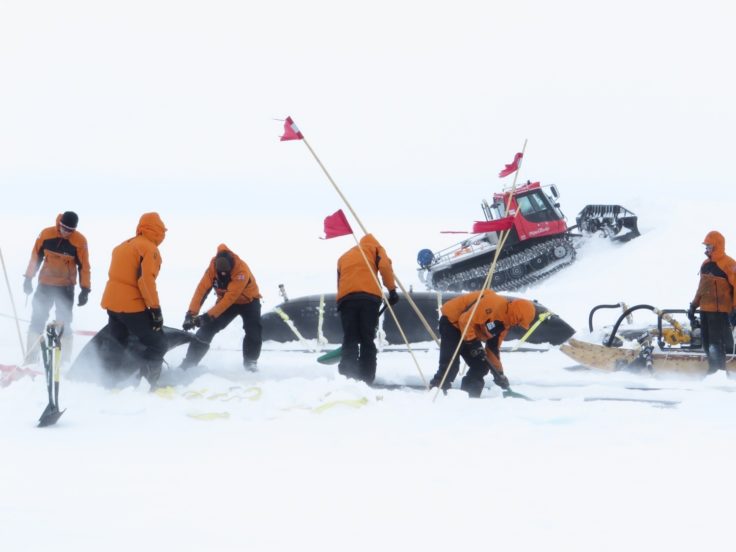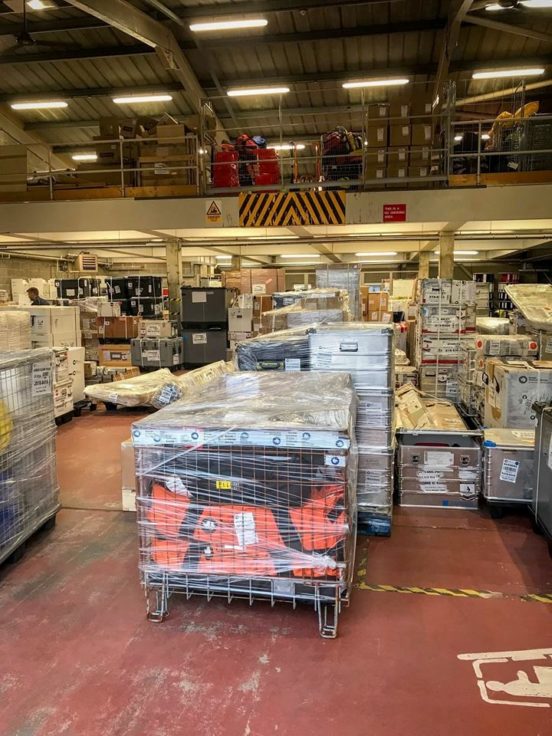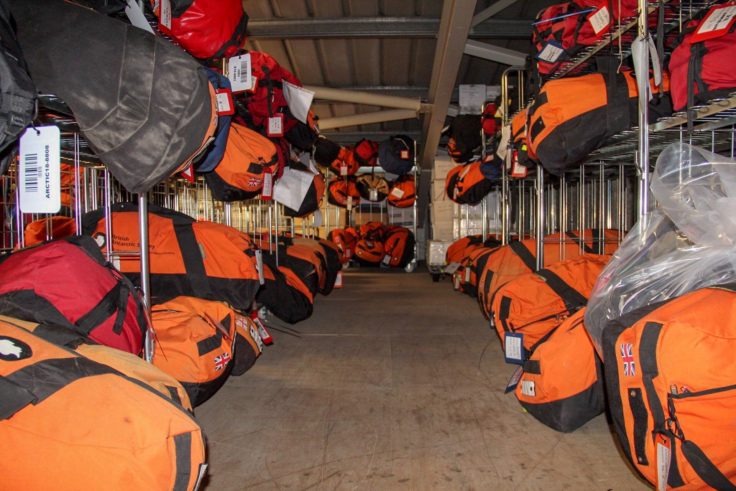Blog: The artistry of Antarctic logistics
6 December, 2018
Earth’s Final Frontier – the title given to the frozen continent by journalists and academics alike, and with good reason. Antarctica stands resolute and alone, separated from mainland South America by over 500 miles of open ocean prone to tempestuous conditions.
Conquering such frigid terrain in the name of science is an achievement to be proud of, but it is far from straightforward. The accomplishments of the British Antarctic Survey (BAS) are shared across hundreds of hardworking individuals, but could not have been achieved without the dedicated work of a small team tucked away in a warehouse at the BAS Cambridge headquarters…
As the 2018-2019 Antarctic season began to loom in late spring this year, the polar supply chain logistics (SCL) department at BAS were already deep in preparation for the annual frenzied duty of transporting another year’s cargo south.
Tasked with receiving, packing, documenting and shipping everything from multi-million pound scientific apparatus to shampoo and shower gel, the logistics team are at the heart of polar science operations. The act of supporting five stations, five aircraft and both the RRS James Clark Ross and RRS Ernest Shackleton is a monumental task. Factor in the ever-growing list of field projects, scientific cruises and building projects also dependent on logistical support, then the scale of the task the SCL team faces each year becomes even more daunting.
As a recent university graduate returning home to Cambridge with conflicting ideas about what direction my professional life would take, I will be the first to admit that finding myself a part of the BAS logistics team was somewhat unexpected. I still question how obtaining a masters in international journalism has led me to the temporary stewardship of the polar clothing store.

But through a bizarre twist of fate it has, and I couldn’t be more satisfied. The responsibility of providing over 300 scientists, mechanics, mariners and medics with polar clothing was not something I was taught to expect while sat in the lecture theatres of Swansea University, but it is a duty I relish daily.
Being involved in the acquisition of polar gear that would make even the most intrepid explorer raise their eyebrows and quietly mutter, “Wow, these guys are serious about what they’re doing,” is more satisfying than it probably should be – but I guarantee most people who also share a passion for outdoor pursuits would feel the same.
Then comes the (not so) simple task of equipping the horde of polar operatives travelling south each year. The Antarctic veterans quickly distinguish themselves from the fresh-faced rookies, often opting to reject the latest models of expensive clothing offered to them in favour of their trusted, decade-old garments covered in seabird guano and generator oil!
But the flashy act of dealing in polar clothing is only one cog in the SCL machine. The enormity of the role played by this team in ensuring polar operations run smoothly can easily be underestimated, and is often only fully appreciated upon seeing the warehouse packed to capacity during the annual peak-cargo season in late August. Every single object in the two-storey building requires detailed documentation before being transported to either Rothera, Halley, or one of the three island research stations. International shipping regulations can make budget airline luggage guidelines look like child’s play; getting permission to move explosives and chainsaws around the globe gives a whole new perspective to the irritating need to buy travel-sized toiletries in the airport departure lounge!

Working in Antarctica is a seasonal job – operations are mostly conducted between September to May as a result of the polar winter being what even the hardiest mountaineer would describe as “a bit too chilly”. This means however that the SCL team are placed under some rather intense time pressures over a 4-month period to ensure all cargo is ready to be loaded onto the ships in UK port.
Despite a few tense moments where the task ahead appeared insurmountable, once again the SCL managed to keep its side of BAS operations running. From here the multitude of technical equipment, polar kit bags and supplies is flown and ferried thousands of miles south across the Atlantic so that it can be used to make the scientific breakthroughs with which BAS has become synonymous.

The success of polar operations cannot be attributed to just one team – cooperation and careful inter-departmental planning is what makes BAS such a key body for polar research. But having been a part of the SCL for two seasons now, I have had my horizons broadened as to how a polar logistical chain operates, and it is substantially more than just packing crates – although there is a significant amount of this!
While the hard work of the logistics team may not always be obvious on the surface, matching the delicate balance required of efficiency and accuracy is an art. With the transition to the era of the new polar research vessel, the RRS Sir David Attenborough looming, this artistic touch might just be the key to achieving the logistical success that everyone here at BAS strives for.